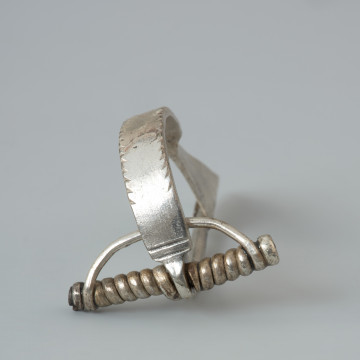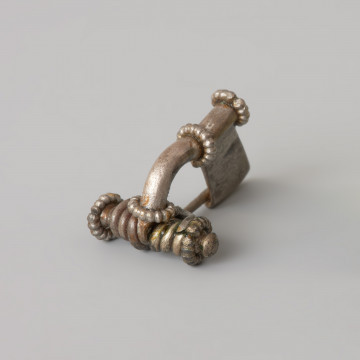
Tortoiseshell buckle
201 — 299
National Museum in Szczecin
Part of the collection: Antiquity
The bronze fibula, known also as brooch, was found on the cemetery in the town of Borkowice in Koszalin poviat. Together with an antler comb it belonged to an assemblage of grave goods from an inhumation grave, discovered in 1892 during sand extraction. In total seven inhumation graves were found in that location. Some of them contained stone structures, but it is not known if they were the stone settings. During the surface survey of the cemetery some individual elements of the grave furnishings were found, including a Roman glass beaker. Part of the finds landed in the Koszalin museum; others were transferred to the collection of the Szczecin museum. The presented fibula should be associated with the people from the Dębczyno group and dated to the late Roman period, i.e., the 2nd half of the 3rd century. The cemeteries of the communities from this group, associated by some researchers with the Lemovii and Rugii tribes named by the Roman historian Tacitus, usually contained about 50 inhumation graves. Next to the skeletons, the archaeologists found pottery and clothing accessories, such as the fibulae. The necropolis were usually located close to the settlements.
Monika Witek
Author / creator
Dimensions
cały obiekt: width: 6.9 cm
Object type
pin (fastener)
Technique
casting
Material
bronze
Creation / finding place
Owner
Muzeum Narodowe w Szczecinie
Identification number
Location / status

201 — 299
National Museum in Szczecin

National Museum in Szczecin

National Museum in Szczecin
DISCOVER this TOPIC
Museum of King Jan III's Palace at Wilanów
DISCOVER this PATH
Educational path